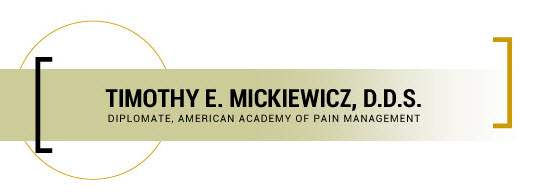 A patient says, “My jaw pops and clicks…so what?”
A patient says, “My jaw pops and clicks…so what?”
The answer to this statement has caused significant turmoil in professional circles, bringing dentists to fisticuffs like schoolkids in the sandbox. They have also turned medical and dental insurance companies on their heads.
It’s both absurd and typical that professionals would quarrel over mysterious noises coming from the jaw joints (temporomandibular joints). If you’ve googled “my jaw pops and clicks,” you’ve likely seen millions of results, ranging from rational explanations to apparently magical cures for the ailment.
Pops and clicks. It seems so simple. Why has it caused such chaos?
The Research on TMD Treatment
Several landmark studies tried to dispel myths about the temporomandibular joints and their dysfunction (TMD), which have fallen on deaf ears.
The American Dental Association convened in the 80s to review treatment philosophies for jaw joint disorders. Their conclusion? Conservative treatment is best.
The Research Diagnostic Criteria by Dworkin et al., sponsored by the NIDCR, reviewed nine or ten treatment modalities, only to conclude that TMD is either myogenous (relating to muscles cells or fibers) or a combination of arthralgia (bone pain) and myalgia (soft tissue pain), or psychogenic—and all of the bells and whistles of measuring TMD parameters were debunked.
The key is, do the pops and clicks come with pain? Also, is there osteogenic (having to do with bone) involvement?
The research team addressed the Axis II, a biopsychosocial aspect of pain. (Biopsychosocial deals with disease stemming from genetics, chemicals in the body; behaviors and personality; and social, medical, or cultural factors.) What a concept! They determined that conservative treatment is best and suggested pain management. As a doctor dealing directly with patients in pain, I’m hoping for than just a lifetime of pain management, but with realistic expectations.
My search led me to Dr. Terry Tanaka’s interesting research. He discovered, through human cadaver dissection, that recapturing a displaced disc in a jaw joint was not the means to a cure, due to the various displacement options for the articular disc (attachment apparatus). However, many have attempted this treatment and, predictably, failed. The surgery is barbaric, and it’s followed by the use of torturous oral appliance therapy.
Alternative methods have been researched, as well. Chiropractic and cranial manipulation, among others, show little, if any, predictability in treating TMD. However, massage, meditation, and yoga are showing promise.
What Works: Splint Therapy
It’s not fancy or exciting, but it is effective. For those who live with chronic headaches and TMD pain, splint therapy is a godsend, a seeming miracle treatment that does not involve surgery or painful treatments. Light posterior contact with cuspid disclusion. Period. Nothing fancy: cover all the teeth, and wear it predominately at night.
All disease processes, including delusion, are inflammatory in nature. So, the splint creates an environment in which the joint can heal. Bolster the physical appliance with use of NSAIDs, topical compounds, Omega-3 fish oil, and judicious use of muscle relaxers. These inexpensive and readily available pharmaceuticals and supplements support the work of the oral splint.
Keep In Mind Who You Are, Doctor
Remember, doctor means teacher. Do no harm and do not cut, for the stone for which you are not qualified.
As we continue this journey of exploring TMD treatments, we’ll look for esoteric issues that don’t require treatment. Pain medicine is a fascinating world. You must all hope to succeed! Start with a kind heart and a good ear, for your patients. These two tools alone will take you far.
About the Author: Dr. Mickiewicz owns a private practice in Sacramento and lectures across the nation on TMD treatments. He is a diplomate of the American Academy of Pain Management and holds membership in many professional associations for dentistry, sleep medicine, and TMD. In addition, Dr. Mick, as his patients call him, founded Pacific Orofacial Pain Consultants, a team of experts in various disciplines, who tackle the issue of TMD pain and treatment, to help sufferers find relief from chronic pain. To talk with Dr. Mick, call his Sacramento dental office at 916-457-7710.


